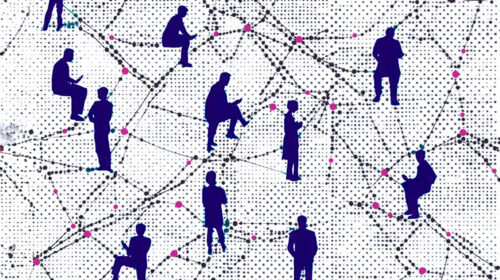Questions about the future have always moved people. Whether the farmer whose harvest depends on the frequency of sun and rain periods, or the sailor whose knowledge about strong winds and ocean currents took the vessel to the port — we are, by nature, curious to gain knowledge about future developments because we want to counteract uncertainty, minimize risk and stay capable of action. But why is there so much uncertainty when it comes to the future?
We live in a world of constant change and information overload. A world which is described as VUCA. The acronym was first popularized by the U.S. Army in the 1990s to describe the post-Cold War world: volatile, uncertain, complex and ambiguous. Since then, the concept has been adopted by companies and organizations to describe the environment in which they operate: the way how people communicate and connect with one another, collect information, buy goods, travel and trade is changing quickly. This is happening in virtual as well as real places through technology’s rapid growth. (Tavar, P., 2016)
To survive and flourish in such an environment, established industries have to constantly adapt and change not only the products and services they offer, but also the way they produce, market and sell them. As the historian and best-selling author Prof. Yuval Noah Harari, puts it:
In the 21st century, you can’t afford stability. If you try to hold on to some stable identity or worldview, you risk being left behind as the world flies by you with a whoosh. To stay relevant — not just economically but above all socially — you will need the ability to constantly learn and to reinvent yourself.
(Harari, 2018)
If you don’t reinvent yourself, new players like Airbnb or Uber enter the field with innovative services that radically modify the business landscape. But how should you reinvent yourself and your organization? How can you prepare for a future you can’t predict? The answer is quite simple. Future is not about prediction. It emerges from co-creation.
How can we co-create the future?
Invite different perspectives into the innovation process
In a VUCA world, involving stakeholders and especially users to create bits of the future is key for developing strategies that pave the way towards desirable futures. The solutions that result from a co-created future will be relevant, accepted and therefore more successful.
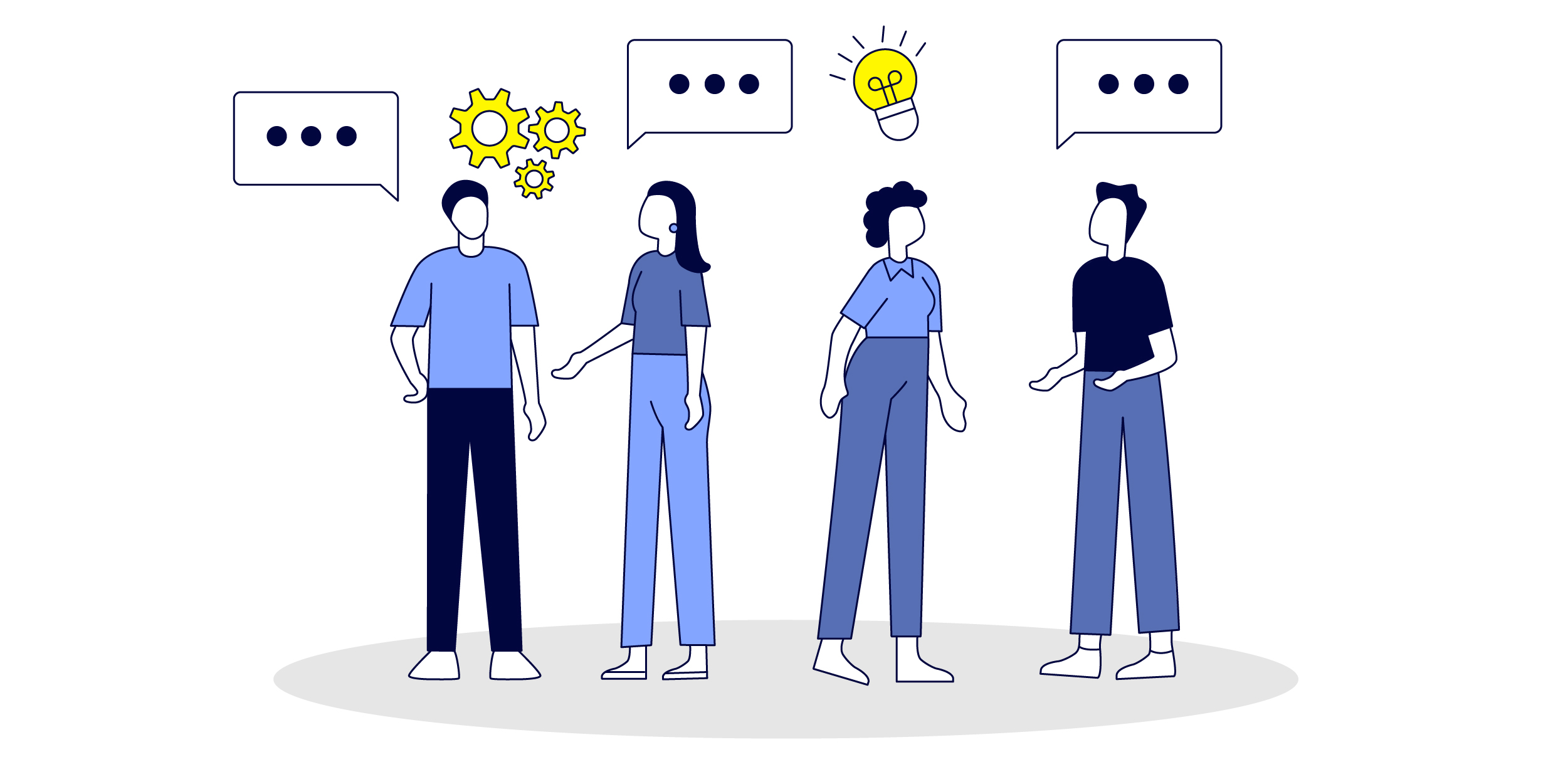
Recognize that motivation starts in your imagination
People are strongly motivated by visions of themselves in the future. They can be so strong that they make people overcome setbacks and build up resilience over a long period of time. Just think about all those athletes who have dreamed of holding the Olympic Gold Medal one day since they were a child. When people are involved in creating desirable future visions for an organization, for a product, a service, or a living environment, they will be motivated by them. They will take ownership and mobilize others to achieve that future.
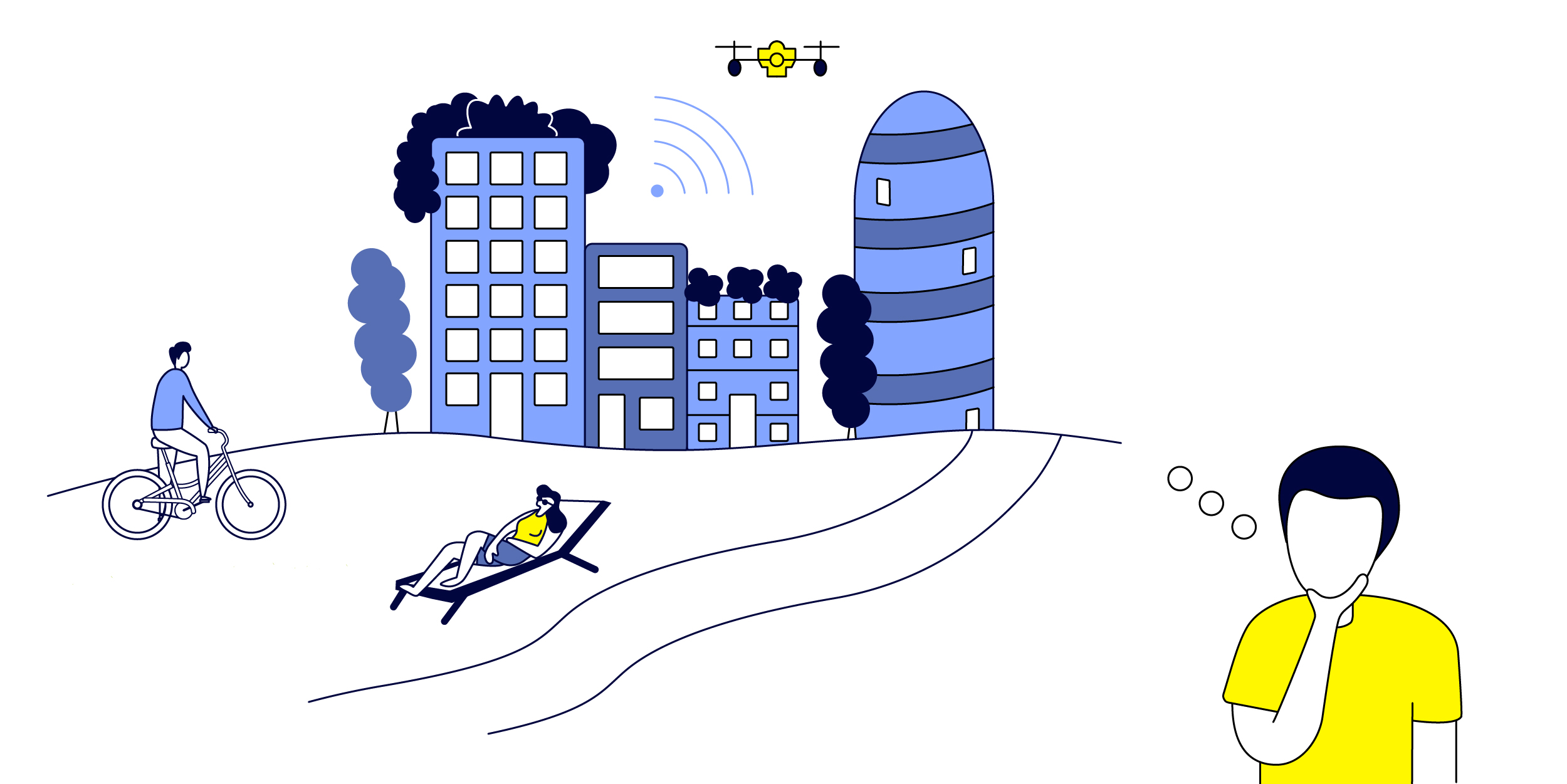
Make the future tangible
One way to co-create the future is to visualize it, in other words to make it tangible. This way, you can make intangible ideas and images that arise from our dreams, beliefs and fears explicit. Tangible prototypes facilitate dialogue, contribution, and involvement from stakeholders and, more importantly, users.

A simple tool to facilitate co-creation of the future
Since dialogue is the cornerstone of co-creation, I will introduce you to a simple tool to foster a joint discussion and make the future tangible. The good news is that we have already been familiar with it since our childhood: LEGO bricks®!
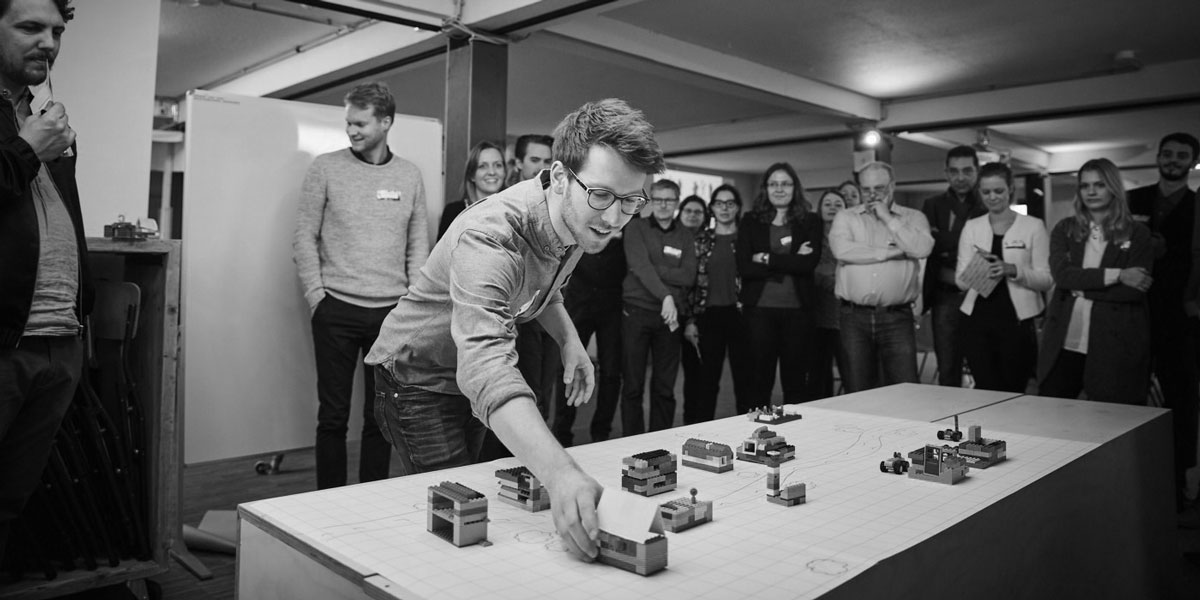
The small colorful bricks are strategically used in the framework of LEGO® SERIOUS PLAY (LSP) “® [2019] The LEGO Group” — an innovative problem-solving, creativity and communication method that is one of the most important agile tools for companies in digital transformation. As 3D printers for thoughts, LEGO bricks® reveal the unconscious and are a universal language to facilitate mutual understanding.
Here is why the LEGO® SERIOUS PLAY® methodology is a promising tool for co-creative foresight processes:
1. Reducing complexity
The future is abstract. The further away, the harder to imagine and discuss it will be. LEGO bricks® force you to break abstract ideas about the future down into haptic models that are easy to understand. This way, influencing factors in complex systems can become “comprehensible”. This helps to create a shared understanding about different and complex future developments within a group.
2. Making the intangible visible
The future is subjective. We all carry an individual set of assumptions about what the future will look like, which is based on our personal hopes and fears or the latest science fiction movie we have watched. For example, when asking a group of people to build their future workplace, they come up with very different models, ranging from high tech offices run by robots to self-sufficient green workplaces or scattered workingspots around the world accessible by beaming technology. Building future scenarios with LEGO® materials helps to uncover our hidden and often unconscious assumptions. Describing and discussing what we have built to others in the room triggers deeper reflection and questioning.
3. Participating through common language
The future is hard to access. Why? Because we lack a clear language. Discussions about the future are often chaotic because of the different opinions and pictures in our head. The LEGO® SERIOUS PLAY® methodology helps to develop a common language to discuss abstract ideas through haptic models and metaphors. A clear and common language about the future results in clearer thoughts and images, as well as greater accessibility and acceptance. A shared language about the future is the starting point for developing scenarios with many different stakeholders.
4. Fostering Creativity
The future is multiple. There are many futures, alternatives and possibilities out there that open up the space for innovation, creativity, and change. LEGO bricks® foster creativity by activating the hand-brain connection. Our hands are connected to 70–80% of our brain cells. Thinking processes in connection with physical movements (especially hands) lead to a better understanding of the environment and the creation of new ideas. The playful approach to the future offers room to introduce all kinds of ideas, even the ones that make people uncomfortable in normal situations (Malat, 2016).
Best practice: bringing together users and experts to foster collaborative innovation
A quick glance at a concrete case will give you a better idea of how the LEGO® SERIOUS PLAY® methodology can be used to co-create the future.
Together with the public utility of Osnabrück (SWO) we conducted a co-creative three stage foresight process, in order to develop different scenarios of how the future of Osnabrück might look like.
As Stadtwerke Osnabrück AG we want to discover new business opportunities in the search fields: Quality of Live, Sustainability, Smart City and Technology. Our goal is to create an ecosystem for innovation that enables the creation of new business models. We focus on customers unsatisfied needs and want to create added value for the citizens of Osnabrück. What our future might look like exactly — we don’t know yet– but we have a lot of ideas we want to share with our stakeholders and build a common vision.
(Sarah Telkamp, Stadtwerke Osnabrück AG)
Along the lines of the quote above, the goal of the project was to create a participatory format where three different stakeholders, the citizens, the city, and the SWO itself could contribute ideas and co-create a desirable future for Osnabrück.
With the help of LEGO bricks®, the SWO visualized important areas in the city of Osnabrück in the year of 2030. The LEGO® prototypes were then illustrated in a lively future map of Osnabrück full of ideas for new products and services.
The playful approach enabled the SWO to develop creative and new ideas for products and services and to co-create a shared vision for the future together with important stakeholders. Citizens as well as the municipality were invited in open citizen and city lab workshops to build upon the LEGO® prototypes and expand the future map. Throughout all stages, LEGO bricks® helped to create a common language to discuss and build upon abstract ideas making the future of the city accessible to everyone.
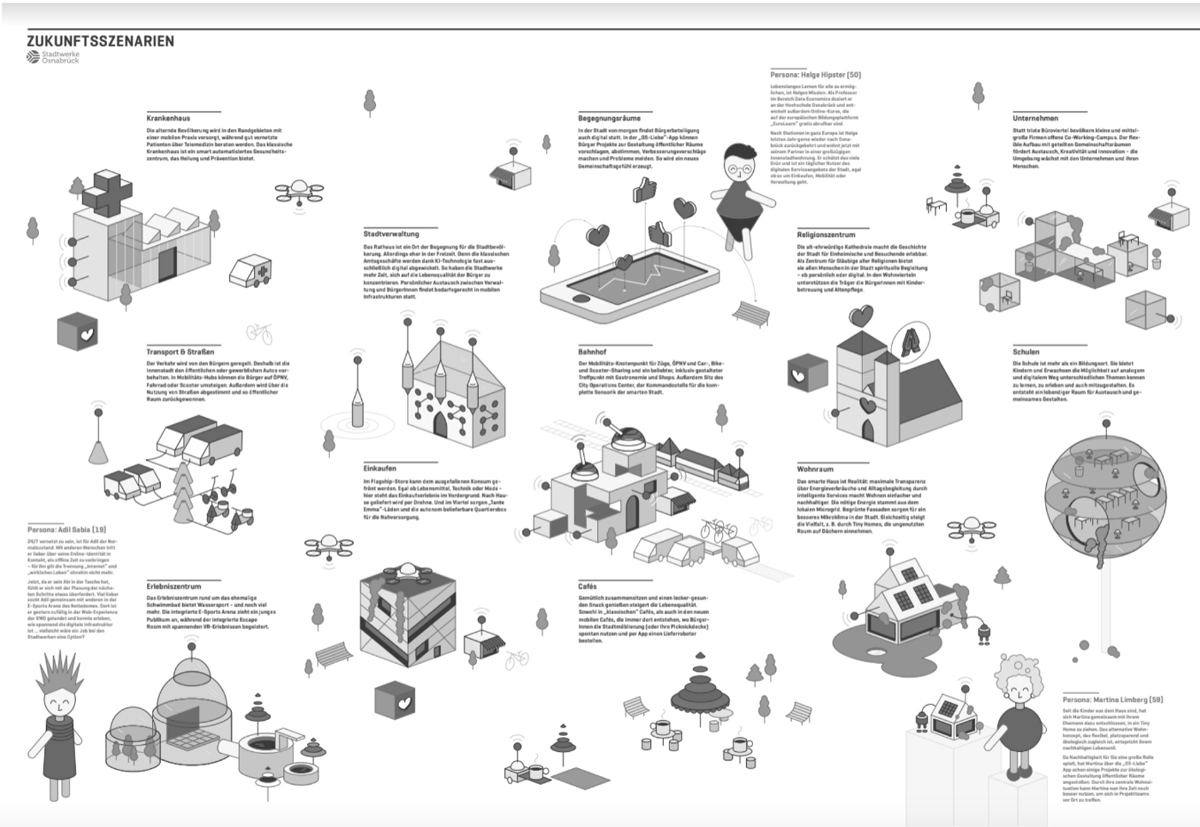
3 quick tips
Here are 3 quick tips when using the LEGO® SERIOUS PLAY® methodology in a co-creative foresight process:
- Before you start building future scenarios with LEGO bricks®, do a stakeholder analysis to make sure that no important stakeholders are left out of the scenarios
- Do a warmup with LEGO bricks® to get the participants used to thinking through their hands
- Encourage participants during the building process to be extreme. Provocative models are the best conversation triggers
If you plan to co-create desirable visions of the future together with important stakeholders, LEGO bricks® are a fun and helpful tool to create a common understanding of where we see ourselves in the future and get people motivated to achieve this desirable future. Are you interested in finding out more about co-creative futures or do you have further questions or experiences you want to share? Feel free to email us!
This article was written together with Sarah Telkamp, New Business Manager at Stadtwerke Osnabrück AG.
List of references:
Harari, Y. N. (2018). What Kids Need to Learn to Succeed in 2050. Medium.com. Retrieved on June 28th, 2019, from https://medium.com/s/youthnow/yuval-noah-harari-21-lessons-21st-century-what-kids-need-to-learn-now-to-succeed-in-2050-1b72a3fb4bcf
Tavar, P. (2016). Leadership challenges in the V.U.C.A world. Retrieved on June 28th, 2019, from https://www.oxfordleadership.com/leadership-challenges-v-u-c-world/
Malat, O. (2016). Lego Serious Play: Anleitung, Grundlagen und Beispielübungen. Retrieved on June 28th, 2019, from https://www.eveosblog.de/2016/05/31/lego-serious-play-anleitung-grundlagen-beispiele-uebungen/
Disclaimer:
The following disclaimer must appear in the close proximity to the Trademarks: “LEGO, SERIOUS PLAY, the Minifigure and the Brick and Knob configurations are trademarks of the LEGO Group, which does not sponsor, authorize or endorse this website”.
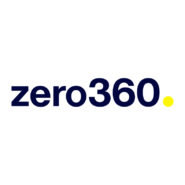
Verfasst von:
Diverse Autor*innen


